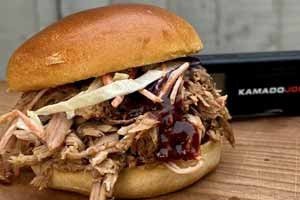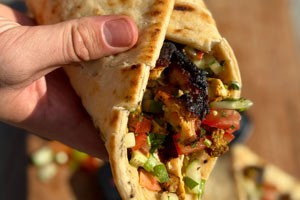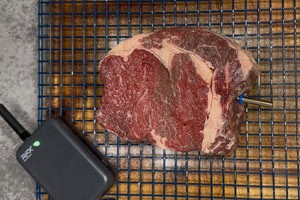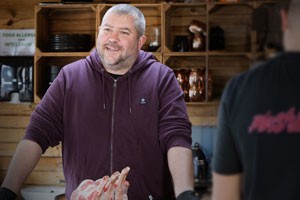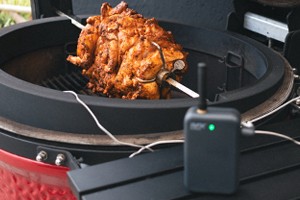Easy, tender BBQ pulled pork, loaded into buns with coleslaw and BBQ sauce.
3 Batch Cooking & Leftovers Tips to Save Money on Food
There are so many reasons to try batch cooking. Or, simply portioning out leftover food so you have lunch or dinner ready for another day. Better yet, instead of taking two hours to cook the same meal twice, why not double the recipe and freeze half?
It’ll save you so much time. Plus, buying your ingredients in bulk will save a lot of money.
Scraping your plates into the bin might not seem like such a big deal, but UK households waste around £730 every single year throwing away food they could have eaten. That’s about £60 a month, and it’s estimated that 25% of this is made up of leftovers that didn’t get eaten.
Luckily, you can take some simple steps to keep your food out of the bin, and Kate Hall from The Full Freezer is here to share her top tips to get you started…
Big Flavours, Small Budgets – A series of tips and recipes from leading chefs, brands and foodies that show how to create delicious food on a budget.
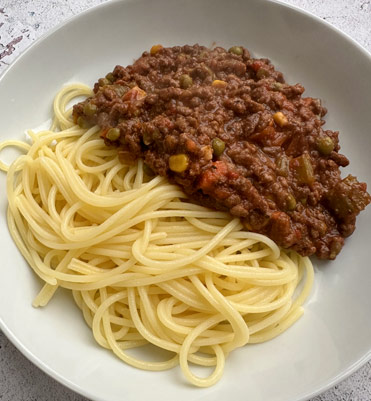
Things to know before cooling and reheating leftovers
The most important thing is to understand how to look after your food properly and the role that temperature plays in keeping your leftovers safe.
How long should you let food cool before refrigerating?
First of all, any leftovers must be cooled down within two hours (one hour for rice), and either refrigerated or put straight into the freezer. Don’t be tempted to put hot food in the fridge or freezer, though, as this will raise the temperature in the appliance, putting your other food at risk.
How to reheat food safely?
Contrary to popular belief, you don’t need to defrost everything in the fridge before reheating; it is fine to pop your leftovers into a pan, the microwave or the oven to reheat straight from frozen. It will need to be heated for longer, though, and it is vital that you use a thermometer to ensure your food is absolutely piping hot throughout (70 °C for two minutes) and that there are no cold spots; if possible, you should stir your food whilst reheating and allow it to rest for a few minutes before serving.
You could also reheat in an air fryer depending on what the food is, but remember that air fryer temperatures run hotter than ovens, so you may need to set a lower temperature to ensure your food doesn’t burn on the outside whilst remaining frozen on the inside.
One thing you should not do is reheat your food from frozen in a slow cooker. This is because they are made to cook on a low and slow heat, and the food will sit at a dangerous temperature for far too long, allowing dangerous bacteria to develop.
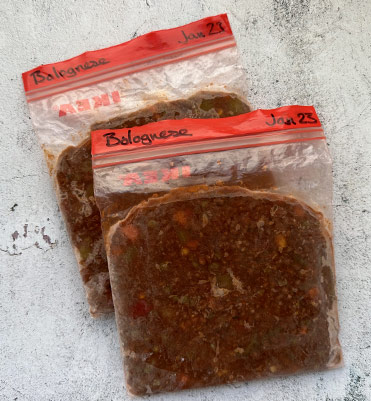
How long do leftovers last in the fridge?
You can keep leftovers in the fridge for up to 48 hours, but I’d always recommend freezing them immediately, so you don’t forget about them!
It's best to eat up your frozen leftovers within 3-6 months, but they’ll be safe to eat for much longer than this as long as you cool and reheat them thoroughly.
What is the temperature for reheated food?
To be sure our food is safe to eat after reheating, I always use my Thermapen to check the temperature throughout. The Food Standards Agency recommend ensuring that foods are reheated to at least 70 °C for two minutes. For larger dishes such as lasagne, I recommend heating to at least 80 °C to be safe, and to check the dish in multiple places to make sure it’s piping hot throughout.
The Thermapen is so quick and incredibly accurate, and gives me total confidence that our meal isn’t going to give us food poisoning!
How to batch cook and freeze leftovers?
I find the best way to freeze leftovers is to separate them into single portions to allow complete flexibility. This way, they can be used on a night when myself or my partner is out, and the other person doesn’t fancy cooking, or they can be repurposed into a different meal.
You could freeze in double or family-sized portions, though, if you prefer. The important thing to know is that the food can only be defrosted and reheated once, so you don’t want to end up stuck with leftovers of your leftovers!
Tip #1
Serve to the Table, not to the Plate
This might sound obvious, but if you dish up all the food you have made straight onto the plates, any excess will likely end up in the bin. This is particularly the case if you have kids. It’s incredibly easy for us to overestimate how much they will eat, particularly as their appetites can vary wildly from day to day.
If you instead bring the pan or dish straight to the table (with a trivet to protect your surface), everyone can serve themselves a modest portion and then go back for seconds if necessary. That’s not to say your kids won’t ever over-serve themselves, but at least it’s not the adults creating the waste!
By doing this, you’ll have leftovers instead of plate scrapings, and you give yourself the chance to keep your surplus food out of the bin. This could save you as much as £180 a year, so it’s a habit well worth shifting!
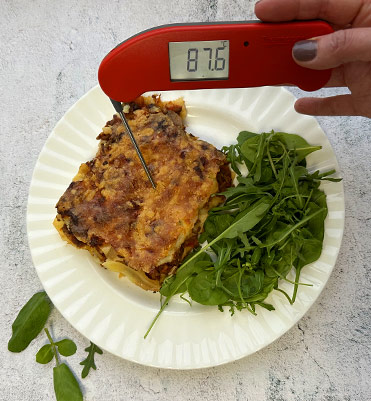
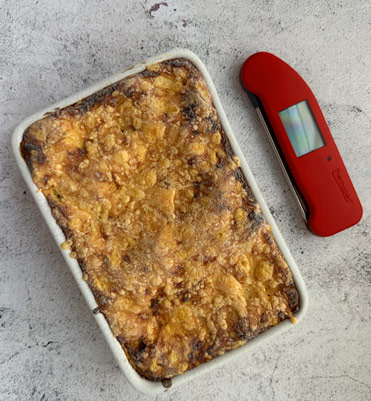
Tip #2
Get Friendly with your Freezer
When it comes to leftovers, your freezer is the perfect tool to help you avoid any waste. Unless you already have a plan to use your leftovers, I strongly recommend freezing them as soon as possible.
By doing this, not only can you save yourself some money, but it also means you have an easy dinner stashed away for those nights when you just can’t face cooking.
You may even like to start making ‘intentional leftovers’ so that you can build up a stash of homemade meals without having to batch cook. There are stacks of different meals that are suitable for freezing such as curries, stews, pasta sauces and much more; a quick search online will provide you with stacks of inspiration!
Tip #3
Repurpose Your Leftovers
Often, the problem with leftovers is the boredom factor. Some people can eat the same food several days in a row and don’t care that there’s no variety. I am not one of those people.
The great thing about leftovers, though, is that they can be quickly repurposed into a different dish. This could be as simple as changing the way the food is served (such as serving chilli in tacos instead of with rice) or turning your meal into something new (like using roasted veggies in a lasagne).
This is handy to remember when freezing leftovers, because you might have a portion left that doesn’t look like it’s worth saving, but if served in a different way, it might be the perfect amount. Small quantities also make great quick meals for kids!
And, of course, if you want to freeze your leftovers to repurpose at a later date, there’s nothing to stop you from doing this (as long as all of the ingredients are freshly cooked).
Doing this can also make it easier to resist the urge to order takeaway. The average Brit spends over £600 a year on ordering in, so even just halving the number of takeaways you have could lead to substantial savings.
Repurposing really is such a great shortcut to a delicious meal with minimal effort; just be sure to check the temperature with your Thermapen before you dish up, and only reheat your leftovers once!
"The Thermapen has become a vital part of my kit in the kitchen. Not only has it stopped us overcooking meat, but it also gives me the reassurance I need that dishes are fully cooked through and safe to eat - particularly if they are being reheated from the freezer."






